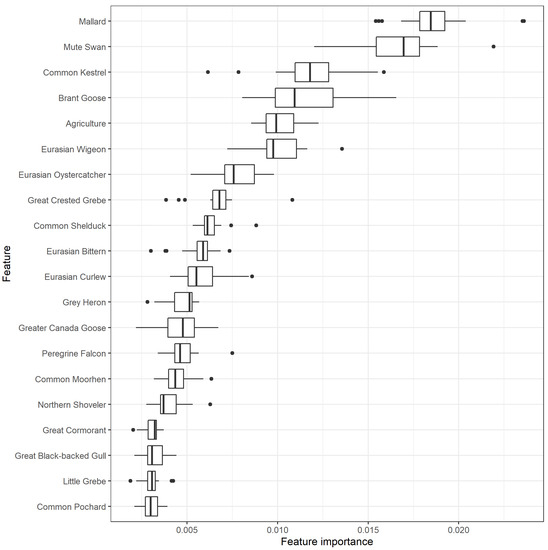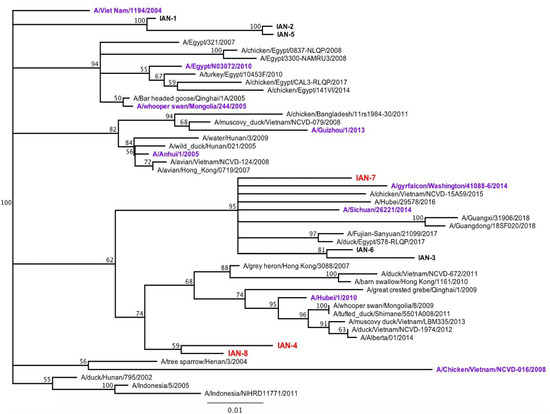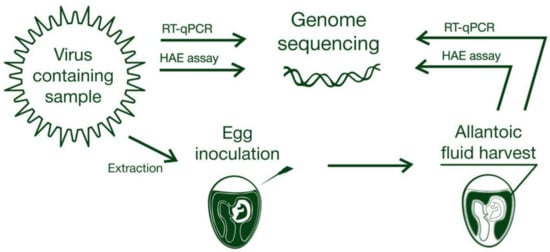Advanced Research on Avian Influenza Virus (AIV) (Closed)
A topical collection in Pathogens (ISSN 2076-0817). This collection belongs to the section "Viral Pathogens".
Viewed by 36228Editors
Interests: avian influenza virus; viral infection and immune response; control of infectious diseases ;immune tolerance in transplantation
Interests: immune response; antiviral therapy; vaccine; pathogenicity
Topical Collection Information
Dear Colleagues,
The sudden emergence of the Asian-lineage H5N1 subtype of highly pathogenic AIV (HPAIV) in 2003 and H7N9 subtype of low pathogenic AIV (LPAIV) in 2013, both of which cause fatal diseases not only in birds but also in humans, has greatly impacted the world. Near-global spread of the H5N1 HPAIV has caused tremendous problems with public health and poultry production. Continuous co-circulation of the various subtypes of AIVs, including HPAIV and LPAIV, in poultry and wild birds can result in genetic reassortments, generating novel viruses. Indeed, in recent years, the Asian-lineage H5 subtype HPAIVs carrying various NA subtypes, namely H5N2, H5N6, H5N8 and other HPAIVs, have been causing outbreaks in many countries in the Asian, European, Middle East, and African regions. Further, genetic changes in the H7N9 LPAIV have generated the H7N9 HPAIV, further threatening poultry and humans. It should be quite important to continuously monitor the evolution of AIV, and also to gain further knowledge on the pathogenicity of AIV.
This Topical Collection aims to solicit primary research articles, reviews, editorials, and commentaries on contemporary and hot topics, and to attract new research articles that address actual pathogens of poultry and wild birds.
Prof. Haruko Ogawa
Dr. Yohei Takeda
Collection Editors
Manuscript Submission Information
Manuscripts should be submitted online at www.mdpi.com by registering and logging in to this website. Once you are registered, click here to go to the submission form. Manuscripts can be submitted until the deadline. All submissions that pass pre-check are peer-reviewed. Accepted papers will be published continuously in the journal (as soon as accepted) and will be listed together on the collection website. Research articles, review articles as well as short communications are invited. For planned papers, a title and short abstract (about 100 words) can be sent to the Editorial Office for announcement on this website.
Submitted manuscripts should not have been published previously, nor be under consideration for publication elsewhere (except conference proceedings papers). All manuscripts are thoroughly refereed through a single-blind peer-review process. A guide for authors and other relevant information for submission of manuscripts is available on the Instructions for Authors page. Pathogens is an international peer-reviewed open access monthly journal published by MDPI.
Please visit the Instructions for Authors page before submitting a manuscript. The Article Processing Charge (APC) for publication in this open access journal is 2200 CHF (Swiss Francs). Submitted papers should be well formatted and use good English. Authors may use MDPI's English editing service prior to publication or during author revisions.
Keywords
- avian influenza virus (AIV)
- highly pathogenic AIV (HPAIV)
- low pathogenic AIV (LPAIV)
- evolution
- pathogenicity
- public health
- animal hygiene












